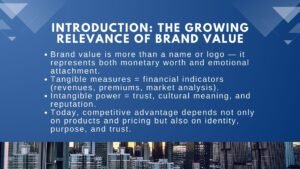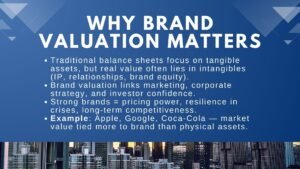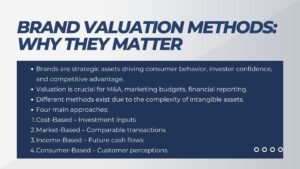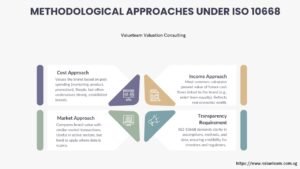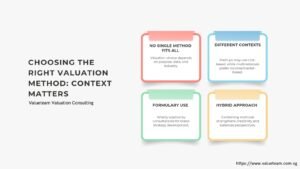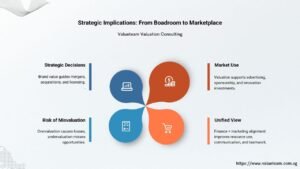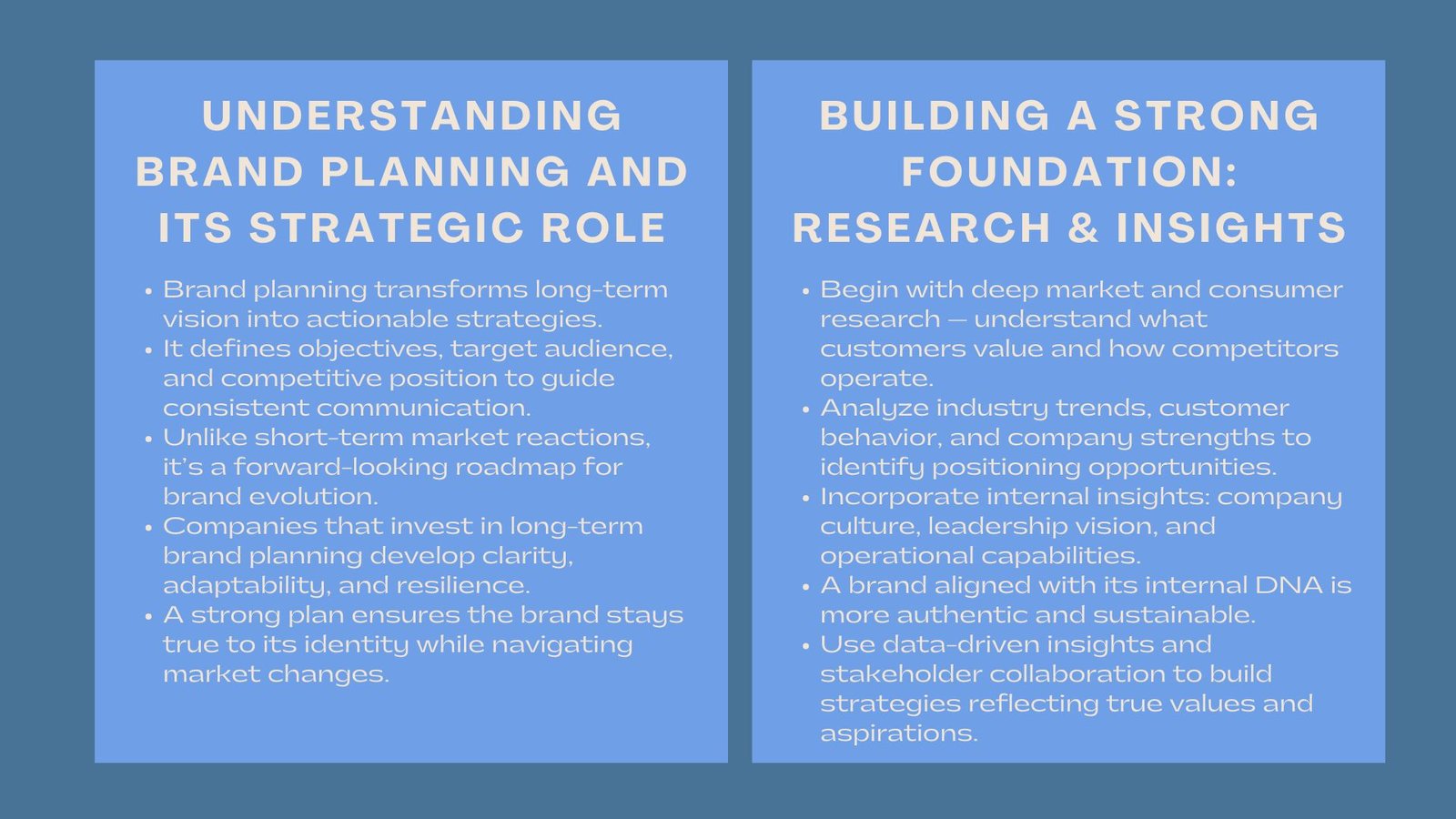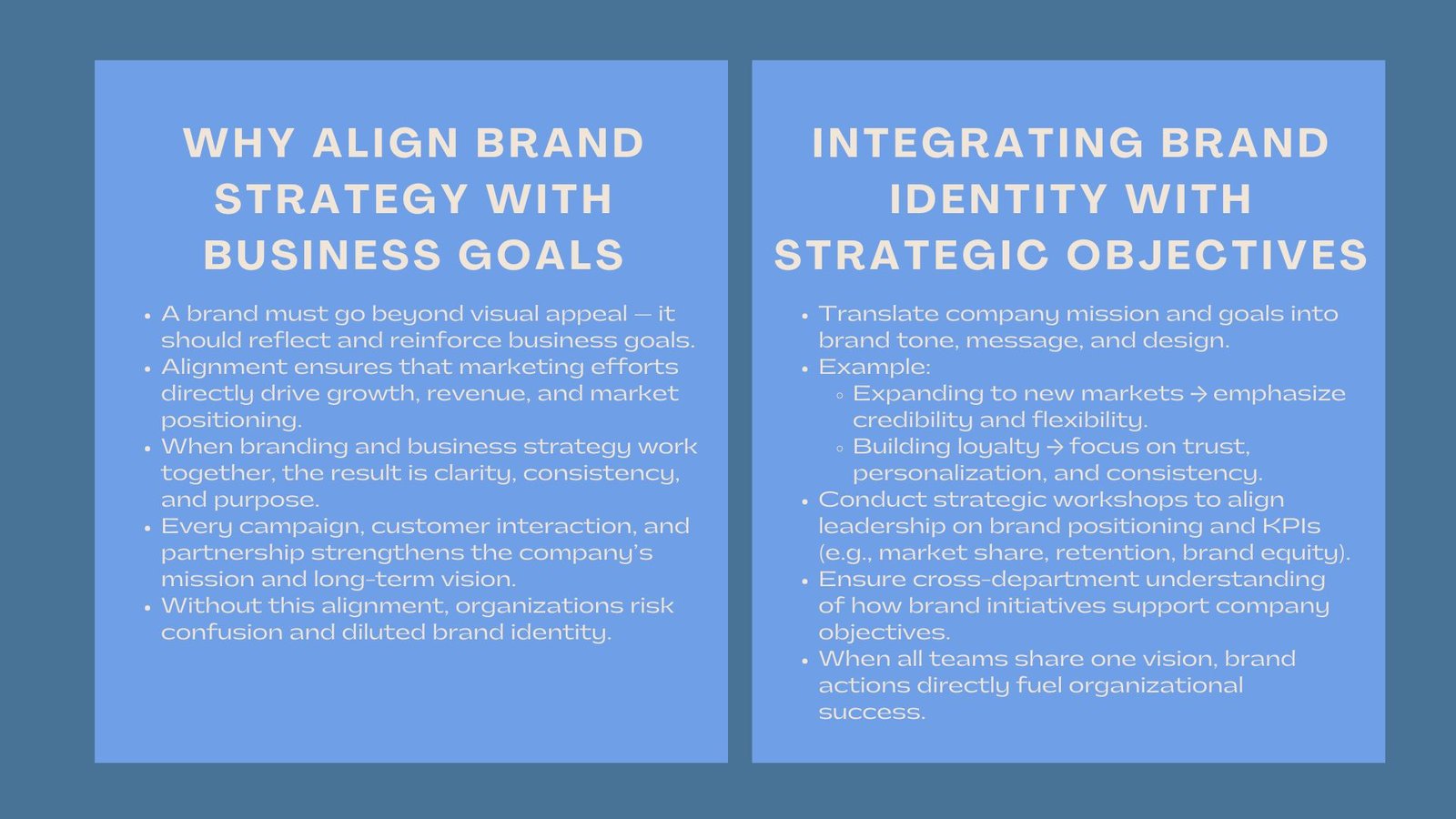
Brand Valuation Methods Explained from Cost to Consumer Based
Guide on Brand Valuation Methods Explained from Cost to Consumer Based
Brands now are more than a symbol or name of the products a company manufactures in a modern business environment. They are formidable assets that can be used to drive consumer behaviour, secure investor confidence and generate competitive advantage. With brands gaining ever-more crucial importance as a part of corporate strategy, the capability of effectively valuing those brands has taken on greater weight. The valuation techniques can suggest to organizations a structure through which they can measure the value of the intangible assets, affecting their decisions on mergers and acquisitions, marketing budgets and financial reporting, among others.
Because of the complexity of the intangible capital, diverse methods of valuation have been developed with their own strength, assumptions, and weakness. Familiarity with these approaches- which include cost-based models, consumer-driven analyses and others- is essential to those in the executive, investment, and analysis fields. This paper decodes the major methods of brand valuation, their logic behind it, their usage and limitations. In this way, it seeks to explain how to help companies better align valuation approaches to their business strategies and objectives.
Cost-Based Approaches: Building Value from the Ground Up
The cost based approach is one of the oldest practices used in valuing brands. It attempts to arrive at a figure of brand value by totaling all the replacement costs or the historical cost spent in creating and developing the brand and maintaining it. This may include costs incurred on advertisements, promotional activities, designing, product packaging, trademarks registration and marketing research. The way it works is simple enough: the amount spent on the development of a brand is its worth, In practice, this approach is often discussed in professional brand valuation services in Singapore explained frameworks, especially when businesses seek structured evaluation models.
The companies with a long-established brand recognition can use this measure as a viable method of connecting valuation with documented investments. To give an example, a multinational consumer goods firm might put together as a proxy measure the total amount of money it has expended in advertising and in various forms of promotion of its flagship brand. This also demonstrates why understanding cost drivers matters for brand valuation in Singapore, since expenses directly influence how brands are measured under this approach.
However, cost-based techniques are limited. They pay attention to what has been spent and not necessarily the impact they have made in the market or what the consumer feels or perceives. A company can spend millions of dollars in advertising, but even then fail to develop good brand equity once the message lacks resonance with the consumers. Hence, cost based models are a starting point in valuation but they do not necessarily reflect the true value of profitable brands that is likely to far outweigh the cost amassed over a time.
Market-Based Approaches: Benchmarking Against Comparable Brands
Market-based valuation approaches strive to estimate the value of brands by executing a study of similar purchases that have happened in the market. Such as recent mergers, acquisitions, licenses or royalty agreements of similarly sized, industry or geographically scoped brands. The analysts can come up with the estimate of what a fair buyer is ready to pay by comparison with the prices of analogues.
Another example is by acquiring a competitor and paying a high premium over the brand portfolio, the transaction acts as a precedent to the valuation of other brands in the industry. Equally, royalty rate analysis wherein the value of the brand is based on the royalty fee that another firm would pay to license the brand is a practical adoption of the market-based method.
This technique can be said to be intuitive but it relies on reliable market information. The nature of brand transactions often vary, and are influenced by competitor positioning, channel strength, or synergies which the acquirer expects. The diffuseness of the trading aspect of the privately handled transactions also makes it more difficult to compare. As a result market-based valuation can give an accurate picture of the current trends in valuations of brands but only with some context in place to arrive at the picture without misinterpreting it.
Income-Based Approaches: Projecting Financial Contribution
The income-based approach has attracted a lot of attention since it links brand valuation to financial performance. This technique calculates the future economic advantages accrued to a brand and it is discounted to present value. It also brings together financial forecasting and brand analysis in interrelating valuation to future revenues, profits, or cash flows that the brand can bring.
Among the best-known methods is relief-from-royalty, in which the analyst estimates how much royalty a company would have to pay had it been created and could only license use of the brand. A proxy to the value of the brand is then given by the present value of such royalties avoided. Other models measure incremental cash flows of the brand against a generic equivalent and so filter out the brand opportunity.
The advantage of this method is that it shows the business the concrete connection between a brand and performance. It equips the managers and investors with facts that prove that branding investments are profitable. Income based approaches are very sensitive even to assumptions regarding growth rates, discount rates and future consumer behavior. An under or over assessment in the estimated revenues or market conditions can cause a huge over- or undervaluation.
Consumer-Based Approaches: Measuring Intangible Power
Although financial models are helpful, they do not always emphasize or acknowledge the psychological and emotional relationship that the consumers have with the brands. Consumer based methods of valuation, also seek to fill this divide by measuring the brand equity directly as perceived at a consumer level. Factors gauged in such approaches include awareness of the brand, loyalty of brand, perceived quality of the brand and associations to determine the intangible strength of the brand in the market. In practice, these insights can also complement intangible asset valuation strategies for Singapore businesses, ensuring that both financial and perceptual dimensions are aligned.
Consumer attitudes and behaviors are very common, using surveys, focus groups and detailed analytics models such as conjoint analysis. As an example, a luxury fashion company may not just be judged by its sales revenue, but also by the desire consumers have to spend more money on purchasing its products than they would have on generic versions of them.
Consumer-based approaches become very valuable in cases where the brands are operating in competitions with huge quantities where the differentiation depends largely on perceptions and loyalty of customers. They assist in revealing brand strength insights that may not be to be felt in financial results yet. Their subjectivity is also a problem though. Consumer tastes are volatile, and there are cultural variations that make the standardization of measures challenging in the different markets across the world. However, in tandem with financial information, consumer-based brand values give a more comprehensive image of how powerful the brand is.

Comparative Analysis: Toward an Integrated Approach
The fact is that no single method of valuation can give perfect information on brand value. Cost- based methods focus on concrete investments, however, it does not reflect market influence. Market-based methods will capture external benchmarks, however, they rely on a few comparables. Income-based methods depend on financial results but they are subjective to the forecast. Consumer-based methods emphasize the intangible equity, which however is subjective and volatile.
Acknowledging these strengths and weaknesses, a commonalty of practitioners argue in favor of an integrated approach that combines a number of techniques. An example can be an analyst proceeding with an income-based calculation to forecast financial returns, which can be verified using consumer-based measures of brand strength and cross reference with related transactions. This three-way process strengthens dependability, as well as makes sure that both tangible and intangible parameters are reflected.
In practice, many of the most dominant valuation companies employ models that consist of a mixture of both, creating a hybrid model to best serve many use cases. The adoption of integrated approaches can help strategists in making sound decisions since they address brand value in a multifaceted manner.
Conclusion: The Evolving Science and Art of Brand Valuation
As intangibles increase in value, brand valuation has become a standard business exercise. Firms, investors, and regulators are gaining heightened interest in reliable brand value metrics both in their financial reporting and in strategy planning and risk management. Although each of the approaches described – including cost, market, income, and consumer-based approaches – presents a different prospect, the fact is that they are stronger when used in combination.
The future of brand valuation is expected to include more advanced data analytics and artificial intelligence and consumer insights to play an important role, allowing more accurate and dynamic valuation. But truly it is a science and art: a science based upon financial models and empirical data and an art based on an in-depth knowledge of the psychology of consumer behavior. By de-mystifying the different approaches, businesses are able to tap into the full potential of the brands they create as the brands are no longer unique but special and valued.


